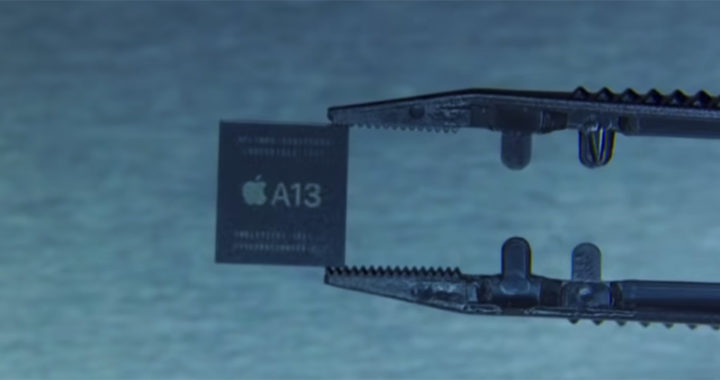The A13 Bionic is a 64-bit ARM-based processor unveiled by Apple Inc. on 10 September 2019 during the new iPhone lineup introduction. The iPhone 11, iPhone 11 Pro, and iPhone 11 Pro Max specifically feature this CPU-GPU-NN combo, thus ushering in the latest generation of the A-series processor. This brief review article lists down and describes the new core features of the A13 Bionic and how it differs from the previous A-series Bionic processors from Apple.
The New Features of Apple A13 Bionic Chip: The Reasons the A13 is One of the Best Mobile Processors of 2019
New Design and Engineering Specifications
Note that Apple designed the chip and it outsourced Taiwan Semiconductor Manufacturing Company or TSMC Ltd. for its mass production. The Taiwan-based manufacturer reportedly used its seven-nanometer manufacturing process to shrink the width between the circuits to just 7 billionths of a meter.
The A13 Bionic also has about 8.5 billion transistors compared to the 6.9 billion transistors found in the previous A12 Bionic and the 4.3 billion transistors in the earlier A11 Bionic. Thus, it is faster and more efficient than the previous critically-acclaimed processors from Apple.
Faster Processing and More Energy Efficient
Similar to the previous A12 Bionic and A11 Bionic chips, the new generation processor has a six-core CPU. However, to be more specific, the first two cores called Lighting are high-performance core running at 2.65 GHz while the four other cores called Thunder are energy-efficient cores.
Apple noted that the Lighting cores are 20 percent faster and consume 30 percent less power than the high-performance cores of the A12 Bionic. The seven-nanometer manufacturing process allows it to achieve a low-power mode.
Furthermore, the Thunder cores are also 20 percent faster and consume 40 percent less power than the energy-efficient cores of their predecessors. Note that although the chip has hundreds of voltage domains, it achieved energy efficiency by supplying power only to the cores being used at any particular time.
Better Graphics Processing for Improved Gaming
Better graphics processing is also a key core feature of the A13 Bionic. Reportedly, it has 20 percent better GPU performance and consumes 40 percent less power than the GPU in the A12 Bionic. The new chip specifically improves on three GPU areas: performance, architecture improvements, and Metal features.
The GPU of the A13 offers 2x faster FP16 texture filtering for improved HDR along with improvements in parallel render and compute processing. Some of the new Metal features include Sparse textures and Rasterization Rate Maps or RRM.
Improved Machine Learning Capabilities
Remember that Apple first integrated localized machine learning processing in its chip with the introduction of the A11 Bionic, particularly through the integration of a dedicated neural network hardware it called the Neural Engine.
The neural network hardware in the A11 Bionic can perform 600 billions of operations per second. On the other hand, the A12 Bionic has a Neural Engine that can perform up to five trillion 8-bit operations per second. Nonetheless, Apple noted that the new Neural Engine in the A13 Bionic is about six times faster than the A12.
Note that the integrated machine learning capabilities of the A-series Bionic chips allow Apple devices to perform localized processing of machine learning algorithms for augmented reality, power and hardware management, and image processing such as facial recognition, and speech processing, among others.
Better Photo Quality Through Deep Fusion
Another notable feature of the A13 Bionic is that it improves the capability of an iPhone device to take and process photos. Apple announced an upcoming iPhone feature called Deep Fusion that takes advantage of the built-in machine learning capabilities of its chip to improve the image quality of photos.
Deep Fusion works by taking nine photos in a single actual take and analyzing them pixel by pixel. The chip combines the best of each image to create a single image that has been optimized to have as much detail and as little noise as possible.
Rivals Processors from Other Manufacturers
The notable rivals of A13 Bionic are the flagship Snapdragon 855 Plus from Qualcomm and the Kirin 990 from Huawei. Note that Apple claims that its chip is the fastest and better mobile processor in the world. There are some merits to this assertion.
On paper, Snapdragon 855 and Kirin 990 look better than their Apple counterpart because of their better tech specifications to include a tri-cluster octa-core compared to the dual-cluster hexa-core configuration of the A13. However, single-core operation of A13 has a Geekbench score of 5415 compared to the 3842 of Kirin 990 and 3623 of Snapdragon 855.
However, the A13 has a Geekbench score of 11294 for multicore processing compared to the 11644 score of Kirin 990 and 11365 of Snapdragon 855. Still, it is essential to note that in real-world applications, iPhones usually perform better than their Android counterparts because of better hardware-software optimization.

